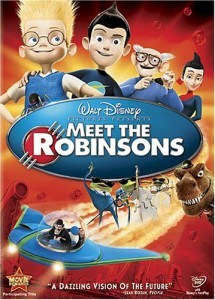 What do you get when you take the technology away from a group of 10 and 11 year olds and ask them to be creative with a handful of household objects?
What do you get when you take the technology away from a group of 10 and 11 year olds and ask them to be creative with a handful of household objects?
Well, Thomas Fraser, a teacher at Crestwood Elementary School in Edmonton, Canada, troubled by the short attention spans of today’s youngsters endeavored to find out by creating what he calls the Bored Game, which involves giving students a handful of common household objects with the only instruction being to do something interesting with them.
The reaction at first from his group of always on youngsters were perplexed looks of how can I create something without an iPad, smartphone or a computer?
Then they started to get into it, and were sad when they didn’t get to play the Bored Game.
CTV recorded an interview about the Bored Game that you can watch here:
(sorry, video is no longer available)
My favorite part of the story is that they’re finding that the performance of the children in a range of subjects is increasing as the children have this periodic time to play and engage their creative problem solving skills.
So, maybe we need less technology in the classroom if we want to teach kids how to learn?
In my opinion, we focus too much on teaching kids to repeat activities, facts, and figures, focusing and what they’re able to memorize and regurgitate and not enough on actually teaching kids creative problem solving and how to learn. We don’t need a new generation of trivia experts, we need a new generation of problem solvers that can help repair the world.
We’ve all heard the saying “If you give a man a fish he’ll eat for a day, if you teach a man to finish he’ll never go hungry.”
If you want your child to be more successful, you have to do the same thing…
“Good teachers teach kids how to do well on the test, great teachers teach kids how to learn so they do well in life.”
For more, I encourage you to check out the Edmonton Journal Article (link expired)
Image credit: Edmonton Journal

![]() Sign up here to get Human-Centered Change & Innovation Weekly delivered to your inbox every week.
Sign up here to get Human-Centered Change & Innovation Weekly delivered to your inbox every week.


 by Braden Kelley
by Braden Kelley
 I was speaking with a friend recently about school, and the topic of tired teenagers came up. He said he mentioned to a member of the school board that they should start high school later so that the teenagers could sleep in. The school board member replied sorry, we can’t do that because we need the school buses to bring the elementary school kids to school at that time. Apparently this is how it works now in most places around the United States:
I was speaking with a friend recently about school, and the topic of tired teenagers came up. He said he mentioned to a member of the school board that they should start high school later so that the teenagers could sleep in. The school board member replied sorry, we can’t do that because we need the school buses to bring the elementary school kids to school at that time. Apparently this is how it works now in most places around the United States: